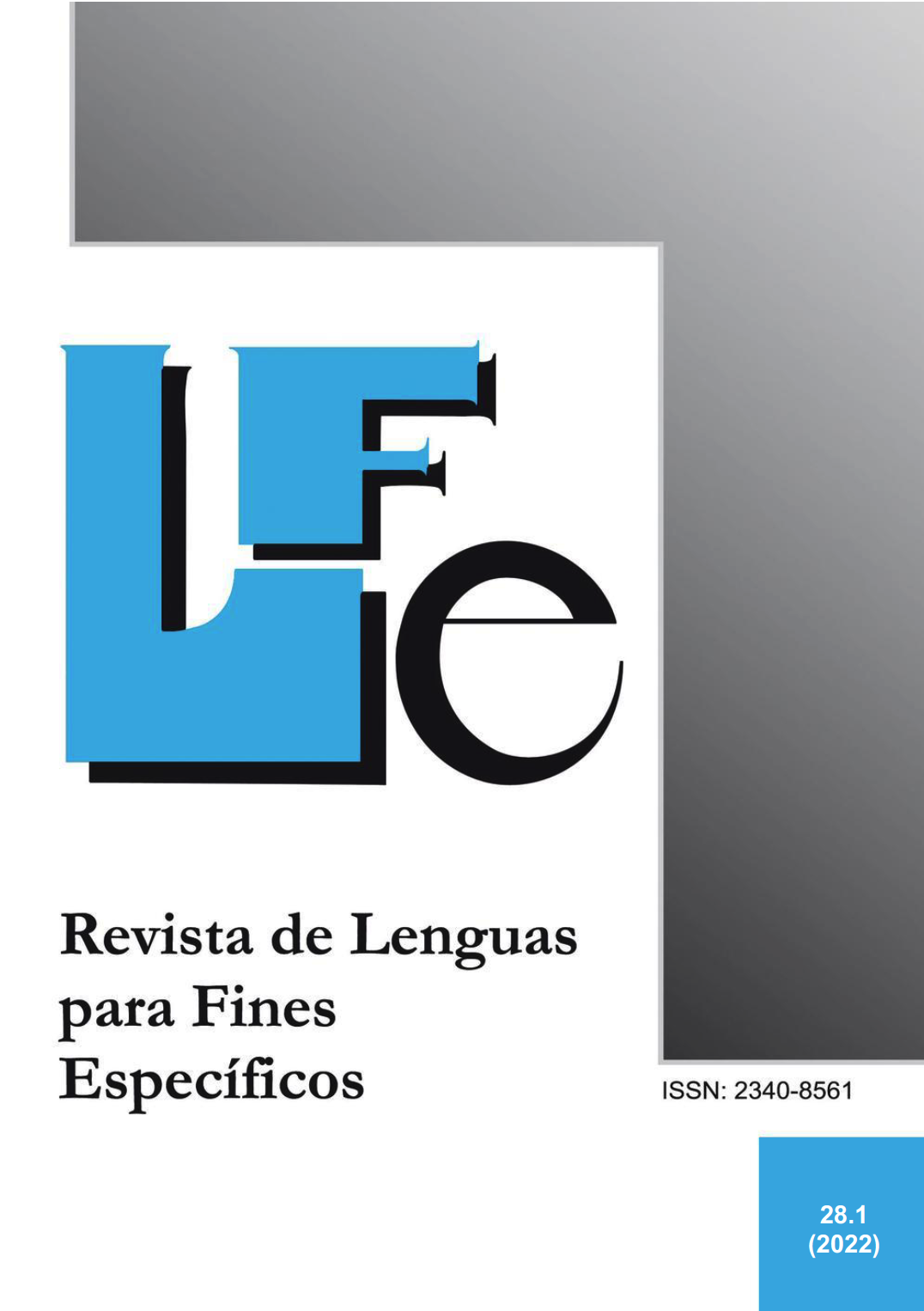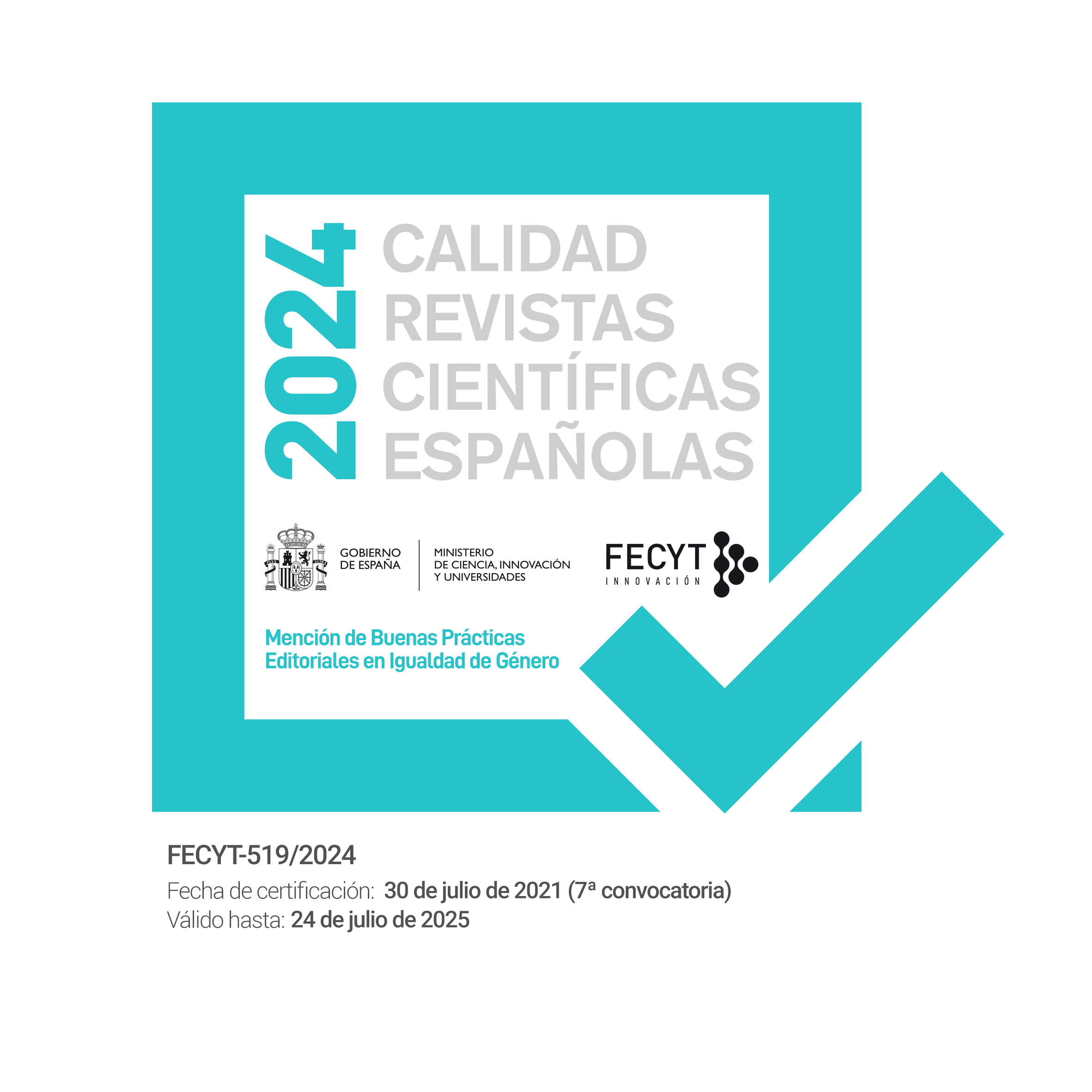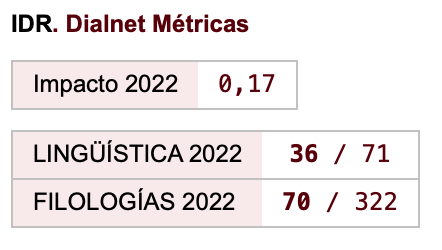Genre description of pesticide labels based on a multilevel analysis and its pedagogical implications for ESP courses
Keywords:
English for Specific Purposes (ESP), textual genres, specialized texts, pesticide labels, EnglishAbstract
Pesticide labels constitute a common textual genre in the domain of the Agronomic Sciences, both in professional and academic contexts. This paper presents the description of the genre on the basis of a multilevel analysis of 41 pesticide labels written in English and available online. The findings show the complex nature of the genre. The analysis evidenced the heterogeneity of the potential readership and of the contexts where the genre circulates. In terms of function, the analysis revealed the preponderance of the prescriptive function, together with the subsidiary functions of informing and contacting. In addition, the analysis showed an increasing standardization of pesticide labels to adjust them to international regulations. Different types of semantic and formal resources were identified that serve the purpose of making labels more accessible to readers. Among the formal elements found, the use of the simple present tense, passive voice and modal verbs are to be highlighted as well as the presence of several paratextual resources. It is possible to conclude that the multilevel analysis frame proved to be a useful tool for the description and that the results of the study can have direct pedagogical implications for ESP courses in the field of the aforementioned Sciences.
Downloads
References
Adelstein, A. y Kuguel, I. (2004). Los textos académicos en el nivel universitario. Los Polvorines: Universidad Nacional de General Sarmiento.
Balboni, P. (1986). LGP versus LSP: Which way to the razor's edge? Unesco Alsed-LSP Newsletter, 9(1), 2-8.
Belmonte, A., Martini, M. F. y Garay, V. (en prensa). Enseñanza de la lectura de etiquetas de agroquímicos en un entorno virtual de aprendizaje. Actas del V Congreso Internacional: Lectura y Escritura en la Sociedad Global. Universidad del Norte, Colombia, Tecnológico de Monterrey, México y Pontificia Universidad Católica del Ecuador.
Belmonte, A. y Martini, M. F. (2021). Prácticas de lectura de los estudiantes de la FCA relacionadas con el género textual marbete: Impacto para los ODS e implicancias pedagógicas. Libro de resúmenes de las Jornadas Integradas de Investigación, Extensión y Enseñanza de la Facultad de Ciencias Agropecuarias, UNC, Argentina.
Bhatia, V. K. (2004). Worlds of written discourse: A genre-based view. London: Bloomsbury.
Busso, N. y López, L. (2017). Géneros académicos y profesionales en inglés en el área de Ciencias Químicas en la UNC. En M. López Barrios, D. Moyetta, C. Raffo y S. Rezzano (Eds.), Lenguas con propósitos específicos Volumen 5 (pp. 46-63). Córdoba: Universidad Nacional de Córdoba. http://hdl.handle.net/11086/5573
Cardini, N. (2021). Los géneros discursivos prototípicos de la Licenciatura en Administración de Empresas: Conformación de un corpus textual con fines pedagógicos [Trabajo Final de Especialización FL, UNC]. Repositorio Digital UNC. https://rdu.unc.edu.ar/handle/11086/19931
Carlino, P. (2013). Alfabetización académica diez años después. Revista Mexicana de Investigación Educativa, 18(57), 355-381. http://www.redalyc.org/pdf/140/14025774003.pdf
Cassany, D. y Morales, O. (2008). Leer y escribir en la universidad: Hacia la lectura y la escritura crítica de géneros científicos. Revista Memoralia, Universidad Nacional Experimental de los Llanos Ezequiel Zamora (Unellez), Cojedes: Venezuela.
Charles, M. (2013). English for academic purposes. En B. Paltridge. y S. Starfield (Eds.), The handbook of English for specific purposes (pp. 137-153). Malden, MA: Blackwell.
Ciapuscio, G. y Kuguel, I. (2002). Hacia una tipología del discurso especializado: aspectos teóricos y aplicados. En J. García Palacios y M. T. Fuentes Morán (Eds.), Texto, terminología y traducción (pp. 121-146). Salamanca: Almar.
Comisión Económica para Europa (CEPE). (2021). Globally harmonized system of classification and labelling of chemicals (9na ed). https://unece.org/transport/standards/transport/dangerous-goods/ghs-rev9-2021
Damalas, C. y Khan, M. (2016). Farmers’ attitudes towards pesticide labels: implications for personal and environmental safety. International Journal of Pest Management, 62(4), 319-325. https://doi.org/10.1080/09670874.2016.1195027
Delfederico, G. y Weht, G. (2017). Los géneros académicos en inglés prototípicos del área de las Ciencias Económicas. En M. López Barrios, D. Moyetta, C. Raffo y S. Rezzano (Eds.), Lenguas con propósitos específicos Volumen 5 (pp. 64-76). Córdoba: Universidad Nacional de Córdoba. http://hdl.handle.net/11086/5573
Dorronzoro, M. I. (2005). Didáctica de la lectura de la lengua extranjera, en E. Klett, et. al., Didáctica de las lenguas extranjeras: una agenda actual. Ciudad Autónoma de Buenos Aires: Araucaria.
Dudley-Evans, T. y St John, M. (1998). Developments in English for specific purposes. A multi-disciplinary approach. Cambridge: Cambridge University Press.
Hamp-Lyons, L. y Hyland, K. (2002). EAP: issues and directions. Journal of English for Academic Purposes, 1(1), 1-12. https://doi.org/10.1016/S1475-1585(02)00002-4
Heinemann, W. (2000). Textsorten. Zur Diskussion um Basisklassen des Kommunizierens. Rückschau und Ausblick. En K. Adamzik (Ed.), Textsorten Reflexionen und Analysen, Tübingen: Stauffenburg.
Heinemann, W. y Viehweger, D. (1991). Textlinguistik. Eine Einführung. Tübingen: Niemeyer.
Moyetta. D. (2017). Tipologización de géneros académicos en inglés en el ámbito del diseño industrial. En M. López Barrios, D. Moyetta, C. Raffo y S. Rezzano (Eds.), Lenguas con propósitos específicos Volumen 5 (pp. 225-240). Córdoba: Universidad Nacional de Córdoba. http://hdl.handle.net/11086/5573
Moyetta, D. (2021). Criterios de selección y secuenciación textual en la enseñanza de inglés con fines específicos: Aspectos teóricos y principios metodológicos. Revista de Lenguas para Fines Específicos, 27(1) 168-184. https://ojsspdc.ulpgc.es/ojs/index.php/LFE/ article/view/1369
Organización Mundial de la Salud. (2015). International code of conduct on pesticide management: guidelines on good labelling practice for pesticides (Revised). https://www.who.int/publications/i/item/9789241509688
Paltridge, B. y Starfield, S. (Eds.). (2013). The handbook of English for specific purposes. Malden, MA: Blackwell.
Parodi, G., Ibánez, R., Venegas, R. y González, C. (2010). Identificación de géneros académicos y géneros profesionales: Principios teóricos y propuesta metodológica. En G. Parodi (Ed.), Alfabetización académica y profesional en el siglo XXI: Leer y escribir desde las disciplinas (pp-18-39). Chile: Editorial Planeta Chilena.
Prior, P. y Bilbro, R. (2012). Academic enculturation: Developing literate practices and disciplinary identities. En M. Castelló y C. Donahue (Eds.), University writing: Selves and texts in academic societies (pp. 19-31). Bingley, UK: Emerald.
Rother, H. A. (2008). South African farm workers’ interpretation of risk assessment data expressed as pictograms on pesticide labels. Environmental Research, 108(3), 419-427. https://doi.org/10.1016/j.envres.2008.07.005
Sánchez Nieto, M. T. (2006a). Publicidad, vitivinicultura y traducción: Estudio contrastivo de presentaciones de bodegas españolas y alemanas. Hermēneus. Revista de Traducción e Interpretación, (8). https://recyt.fecyt.es/index.php/HS/article/view/6203
Sánchez Nieto, M. T. (2006b). Un estudio contrastivo del género formulario de inscripción a congreso (español/alemán) con aplicación didáctica para la clase de traducción. TRANS. Revista de traductología, (10), 113-134. https://doi.org/10.24310/TRANS .2006.v0i10.1090
Swales, J. M. (2004). Research genres: Explorations and applications. Cambridge: Cambridge University Press.
Swales, J. M. (1990). Genre analysis. English in academic and research settings. Cambridge: Cambridge University Press.
Valderrey, C. (2017). Modelos textuales multinivel y desarrollo del saber en Derecho en la formación de traductores. SENDEBAR Revista de Traducción e Interpretación. Universidad de Granada, 28, 53- 70. https://revistaseug.ugr.es/index.php/sendebar/ article/view/5493/5639
Waichman, A. V., Eve, E. y da Silva Nina, N. C. (2007). Do farmers understand the information displayed on pesticide product labels? A key question to reduce pesticides exposure and risk of poisoning in the Brazilian Amazon. Crop protection, 26(4), 576-583. https://doi.org/10.1016/j.cropro.2006.05.011
Downloads
Published
How to Cite
Issue
Section
License
Authors who publish with this journal agree to the following terms:
- Authors retain copyright and grant the journal right of first publication with the work simultaneously licensed under a Creative Commons Attribution License that allows others to share the work with an acknowledgement of the work's authorship and initial publication in this journal.
- Authors are able to enter into separate, additional contractual arrangements for the non-exclusive distribution of the journal's published version of the work (e.g., post it to an institutional repository or publish it in a book), with an acknowledgement of its initial publication in this journal.
- Authors are permitted and encouraged to post their work online (e.g., in institutional repositories or on their website) prior to and during the submission process, as it can lead to productive exchanges, as well as earlier and greater citation of published work (See The Effect of Open Access).

Revista de Lenguas para fines específicos is licensed under a Creative Commons Reconocimiento-NoComercial-SinObraDerivada 4.0 Internacional License.
























